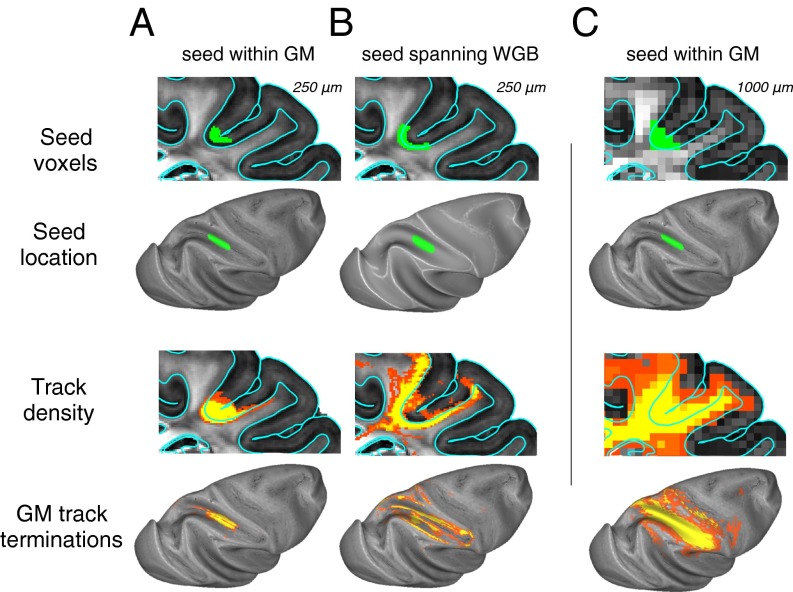Fig. 8.
Effect of gray matter seeding strategy and spatial resolution on penetration of track lines into the deep white matter. The upper two rows show seeding strategy, and the lower two rows show distribution of track lines. (A) A slab of voxels (rather than surface coordinates used elsewhere in this study) was used to create a tractography seed region in the fundus of the IPS. Voxels were selected within a region projected 250 μm above and below the cortical midthickness. Examination of the resulting track density and track termination plots revealed that this large seed led to minimal labeling away from the IPS, consistent with the results shown in Fig. 2. (B) Shifting an equivalent slab to straddle the WGB led to more widespread labeling, particularly on adjacent gyri. (C) In a 1-mm isotropic dMRI dataset, down-sampled from the 250-μm dataset, voxels projected using 250-um methods and parameters identical to those used in A resulted in an even broader spread of track lines. Note that the increased spatial distribution in B and C did not improve the accuracy of projections emanating from the overlying cortex but simply reflected the seeding of superficial, broadly projecting white matter tracts.

